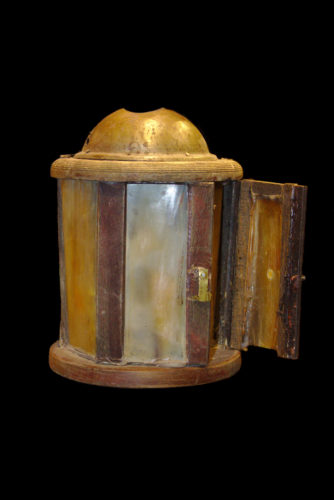While the discovery space could enact concealment, revelation, and secret observation spatially, certain props could do so symbolically. The dark lantern had an inbuilt arrangement to conceal its own light, and was used on the early modern stage to make invisibility visible, and to bring alive the sense of covertness in accessing knowledges that were meant to be hidden. In Thomas Heywood’s A Woman Killed With Kindness, Frankford makes a journey of investigation and discovery through various rooms in his house into his marital bedroom, to catch his wife Anne and her lover Wendoll in ‘the act of night’ (2.3.153). The ‘dark lantern’ which he carries symbolises, in a sense, the unrepresentability of a scene of such intimacy and privacy on the stage: the scene of adultery itself is witnessed only by Franklin peering in at the door, and remains dark to the audience. In John Webster’s The Duchess of Malfi, II.iii, the ‘dark lantern’ is associated with surveillance as Bosola enters the castle with one, to spy on the Duchess after hearing noises from her room. Later, a scene of secrecy is to be lit up for Antonio by a ‘dark lantern’ as he ponders killing the Cardinal while he prays – alerting the audience of the darkness; but by the time his servant fetches it, Bosola – hearing but not seeing Antonio - mistakes him for the Cardinal, or an assassin, imagines that it is his own murder that is being planned, and kills him in error (5.4.43, 49). The dark lantern, like the half-opened doors, becomes a symbol for the theatre’s preoccupation with what cannot be shown, and the staged and constructed nature of seeing itself.
© 2019 University of Cambridge and Fitzwilliam Museum











